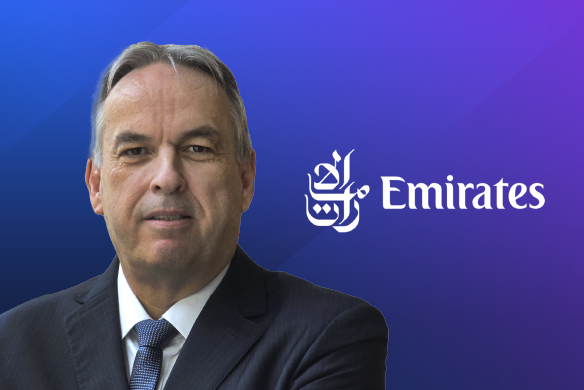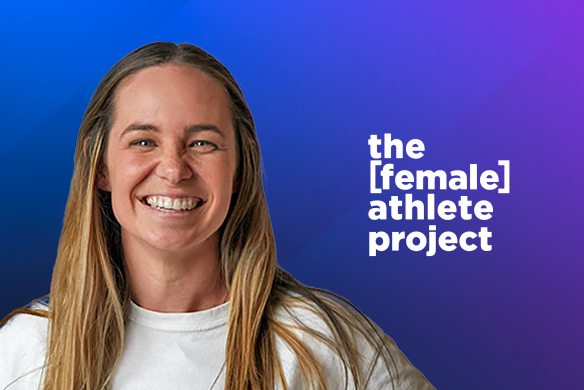Meet Lori Woodcock, the Senior Vice President of Talent Technology at McCann Worldgroup. Beginning her career as a relationship marketing expert, Woodcock’s path took unexpected turns, leading her to the forefront of talent technology’s role within the organization. From building Intranets to leading the technical Project Management Office, Woodcock’s story mirrors the dynamic evolution of technology’s impact on business processes.
In an engaging conversation with our CEO, Dimitri Boylan, at our annual US conference in D.C., Woodcock shared insights into her 23-year journey at McCann Worldgroup, offering a unique perspective on the evolution of technology’s role in the business of talent.
Building Bridges
A common blocker in many companies has been the siloed way in which business and IT teams work. In fact, Boylan shared that one of the main concerns he hears from each side when speaking to customers is that they don’t speak the same language. But Woodcock has navigated this challenge successfully, sitting at the nexus between business and technology and acting as a true partner.
Having always been on the IT side of the fence, Woodcock shared that leading certain internal projects has been game-changing in forging a relationship with HR teams, ultimately learning to speak their language and building her team around that.
I think I bridged the gap, I’m kind of in both camps. I think that the way that my career has evolved, I’ve been very fortunate because I’ve always had a logical bent and a technical bent. Data has always been very interesting to me and looking at things from a lens of how we want to use this information to ultimately provide value to the business has always been where my sweet spot is.”
Lori Woodcock
SVP of Talent Technology, McCann Worldgroup
Leveraging the Common Ground
Given the challenges that many organizations face when trying to forge this kind of collaboration between IT and HR, Boylan asked Woodcock to share some of her secret sauce. Here, she explained how one of the keys to her success has been proactive relationship-building with other technology areas of the business.
While the work of data privacy, business intelligence or infrastructure teams, and their approaches to technology, might not necessarily relate to each other in an obvious way, there is a common thread that has helped her forge meaningful connections and deliver powerful insights to her stakeholders: people data.
When you start talking about it, people data is the foundation of so much, right? They might not be obvious, but once you make those connections, it opens up a whole new area of information to bring back to the HR partners to say, hey, did you know they’re doing this over here? Did you know they’re doing that over there? Helping to foster conversations really between different parts of the business and the technology folks.”
Lori Woodcock
SVP of Talent Technology, McCann Worldgroup
Building a Connected Ecosystem From Scratch
More often than not, the pressure to meet short-term business needs can lead companies to implement isolated products that solve a particular problem, rather than thinking about a long-term overarching architecture. But Woodcock explained that this luckily hasn’t been the case at McCann.
When I first started to look at talent technology-related tools to deploy to the organization, there really wasn’t foundational data. There really wasn’t even even a core HRIS. We didn’t have a system way back then.”
Lori Woodcock
SVP of Talent Technology, McCann Worldgroup
The benefit of starting from scratch has been that when they began implementing talent tools, they did so by focusing on the foundational data and building a connected ecosystem that would support their long-term goals. This is something that Woodcock is truly passionate about: looking at the talent lifecycle holistically, safeguarding the ecosystem with a bigger-picture approach to technology and ensuring the data runs seamlessly across the organization to deliver agility and powerful insights.
This technology may not need to interface with this technology over here today. But if you want analytics, if you want these things to come together, they have to speak the same underlying language. And so if you build to speak the same language, then your results and analytics that you’re going to be able to bring together at the end are going to have a much more powerful impact.”
Lori Woodcock
SVP of Talent Technology, McCann Worldgroup
Woodcock also encourages the business to think holistically about what they’re trying to accomplish on a larger scale, understanding what the problems are in the context of the industry and the requirements that need to be addressed. Depending on the type of processes, they may want to build them into one technology or another. No matter the combination, McCann’s ecosystem remains connected thanks to that foundational data and the fact that it was architected so that every part speaks to each other.
I think that the foundational data that you put and if you architect the system so that those things can speak to each other, then ultimately, you know, if you are going best in class as an approach, you’re able to connect the dots and you’re able to leverage a consistency that you’re building into those tools so that you can get what you need, you can get the data, you can get the insights out of it.”
Lori Woodcock
SVP of Talent Technology, McCann Worldgroup
Ensuring the Interoperability of Your Technology Stack
In her passion for connected systems and a consolidated technology stack, Woodcock chatted to Boylan about a persistent conflict that she and her team try to balance. While the benefits of the one-platform approach are evident, sometimes the business calls for a best-in-class solution outside of that ecosystem. In these cases, Woodcock emphasized the critical importance of interoperability.
She says that a critical factor when deciding if certain technology is the right investment is the employee lifecycle because her ultimate objective in terms of HR technology is to deliver a consistent experience for candidates and employees. In this sense, Boylan emphasized that really good technology should almost become invisible and enable a frictionless experience.
You want a person, from the very beginning of their career before they’re even in the door, you want them to feel a certain way. You want that experience to be positive and consistent. And that’s a challenge when you have different technologies… Whatever work you need to do behind the scenes to make that feel like it’s all connected to the end user is really one of the goals.”
Lori Woodcock
SVP of Talent Technology, McCann Worldgroup
Technology as a Facilitator of Change
Their animated discussion on the evolution of talent technology naturally shifted to the topic of change management. As a dedicated business partner, Woodcock highlighted the importance of acknowledging that change can be painful for those going through it.
People tend to think that their process is very unique and that you can’t take away their process. And what I’ve found in my career is that you first have to address those concerns. You first have to address the fear that comes along with changing something.”
Lori Woodcock
SVP of Talent Technology, McCann Worldgroup
She also highlighted the paramount importance of understanding where the person is coming from, what they’re doing today and genuinely listening to them.
Then and only then can you really say, ‘Let’s talk about how we can utilize this to meet your needs.’ You need to bridge that gap so that people feel good about moving away from what they know to something that’s unknown and that they’re going to be supported in that process.”
Lori Woodcock
SVP of Talent Technology, McCann Worldgroup
Through this empathetic approach, Woodcock has successfully avoided conflict between the technology side and the business. Effective communication serves as a powerful enabler when it comes to translating the purpose behind the technology they deploy into a benefit that stakeholders can understand. With so many paradigm shifts happening in the business and technology landscapes, these conversations can alleviate uncertainty (and the resistance that usually comes with it) while proactively building buy-in for the changes that may come.
Final Thoughts
Lori Woodcock’s journey exemplifies the increasingly stronger relationship between technology and business, where strategic thinking, adaptability and a passion for innovation pave the way for success. As organizations navigate a dynamic landscape, leaders like Woodcock play a crucial role in shaping the future of technology and business integration.A similar approach can lead to success on the HR side of the house. After all, as the most ambitious HR leaders look to cement their position as strategic advisors to the business, this kind of symbiotic partnership is essential.



